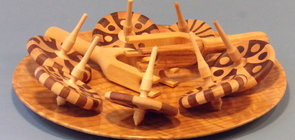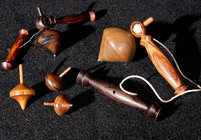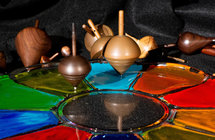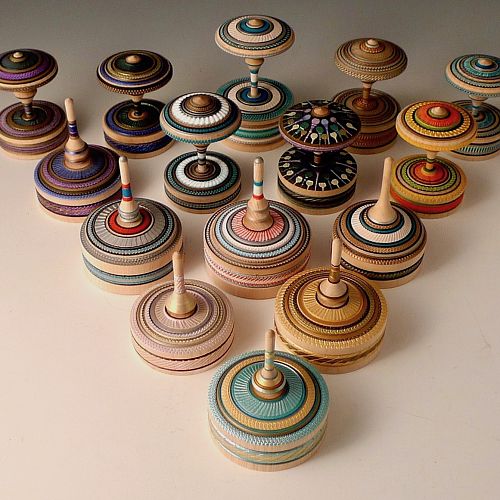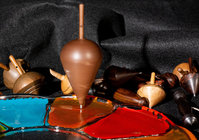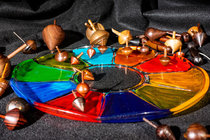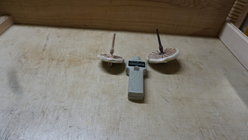Spinning tops are one of our foundation projects in our high school program, so I've seen a great many highly original top designs. I think one of the most important aspects for a long spin is to have a small diameter stem. When we spin them with our fingers, we're only sliding a half inch or so of skin over the surface. With a large stem, that's a half a rotation, but with a very small diameter, it may be 4 full rotations.
For stability, the mass needs to be low, so as small a stem as possible, and then the body should be sort of a triangle, with all the mass below the equator. One of our club members has made a variety of really original and interesting tops, including some that flip themselves over and spin on the stem. One of his models is a CD/DVD disc with a wood point on the bottom and a stem out the top. They spin well, though aesthetically, they don't appeal to me.
It's been real interesting to see how differently people conceive and execute top designs. Ultimately, how long they spin isn't as important as the creative expression they make.

